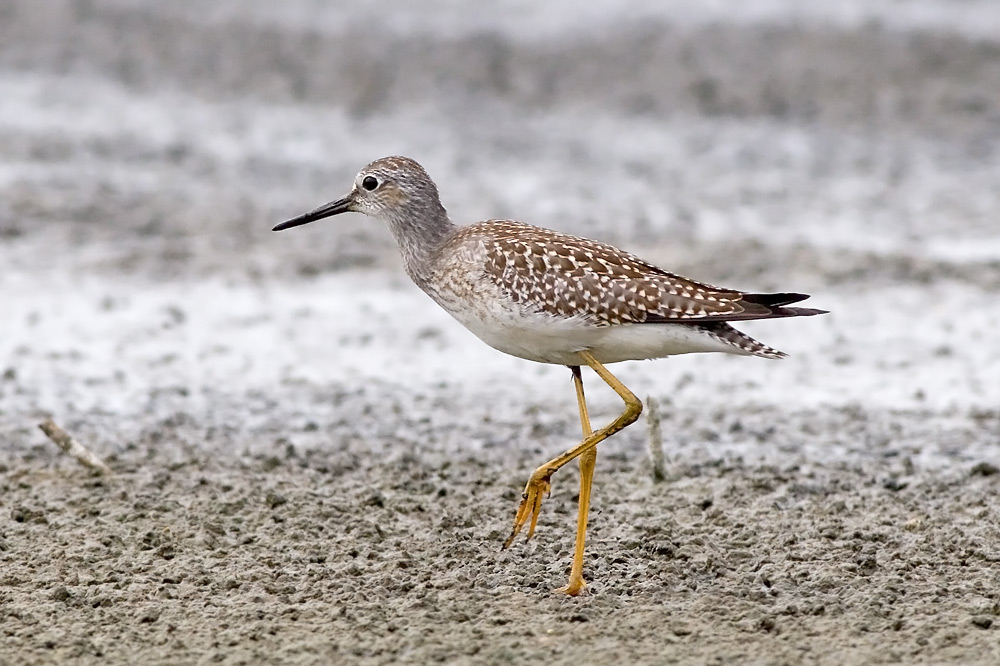Like any other birder, I don't have any problem separating Pied and White Wagtails in spring, but the two seem to cause a lot of confusion in autumn, when grey-backed juvenile Pied Wagtail confuse the issue, and there is often debate about the ID of the two species.
Having seen and considered the identification correct of a 'few' White Wagtails with at least 100 Pied Wagtails on Cockerham Marsh on Tuesday 26 August, this is how I see the issue in a very brief and simplistic way....
In late August/early September, migrant White Wagtails (WW) are always in newly moulted, clean and fresh winter plumage, comparatively, local Pied Wagtails (PW) still look scruffy and often dishevelled. As far as the young birds are concerned, in late August/early September, it's a case of comparing first-winter WW with PW that still retain a significant amount of their weak and fluffy juvenile body plumage. Such birds have black breast patches, whereas first-winter WW have already acquired a neat narrow crescent-shaped necklace across the lower throat/upper breast, adults have a noticeably thicker breast band.
Having seen and considered the identification correct of a 'few' White Wagtails with at least 100 Pied Wagtails on Cockerham Marsh on Tuesday 26 August, this is how I see the issue in a very brief and simplistic way....
Autumn/Winter White Wagtail. Copy Permitted.
In late August/early September, migrant White Wagtails (WW) are always in newly moulted, clean and fresh winter plumage, comparatively, local Pied Wagtails (PW) still look scruffy and often dishevelled. As far as the young birds are concerned, in late August/early September, it's a case of comparing first-winter WW with PW that still retain a significant amount of their weak and fluffy juvenile body plumage. Such birds have black breast patches, whereas first-winter WW have already acquired a neat narrow crescent-shaped necklace across the lower throat/upper breast, adults have a noticeably thicker breast band.
PW are a darker sootier grey on the upperparts, adult males being largely black above, but the important feature of autumn PW is its extensive dark sooty-grey flanks....they always do have, WW have white flanks....they always do have.
Autumn WW look clean, neat and immaculate, they are pale grey above, with white flanks and a neat and contrasting black necklace across the lower throat/upper breast. August/September PW, on the other hand, are rather scruffy as a result of their active moult. They retain significant amounts of black on the breast, they are a dark smoky-grey above and they have extensive smoky-grey breast sides and flanks.
I'll be looking for more White Wagtails to continue my learning in the coming weeks, but it looks like I may be virtually on my own in recording them, indeed one reference I read recently claimed that....'very few White Wagtails have ever been seen in autumn in north Lancashire'. I just don't understand this claim which makes it sound like the birds I saw weren't White Wagtail after all....well I don't buy that!
Thanks to Jan Larsson for the excellent Black Tern header.





.jpg)







.jpg)















.jpg)






